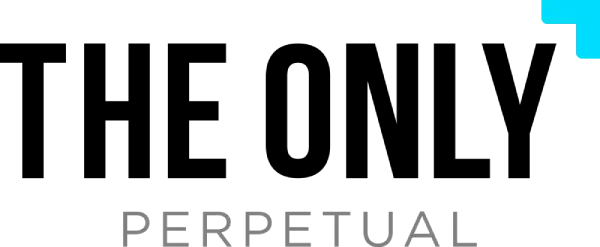Difference Between Web Design and Web Development?
- News
- December 8, 2024
When it comes to creating a website, the majority of web design agencies have two terms are often used In place of each other: “web design” and “web development.” While they may seem similar, they refer to two distinct processes. Whether you are starting a website for your business or trying to understand how a web agency works, knowing the difference between these two concepts is essential.
In this article, we’ll break down what web design and web development are, how they differ, and why both are crucial for building a successful online presence
Understanding Web Design
Web design is the process of creating the visual aspects of a website. This includes the layout, color schemes, fonts, images, icons, and overall aesthetic appeal. The primary focus of web design is to ensure the website looks great and is user-friendly for both desktop and mobile devices.
A well-designed website attracts visitors and makes it easier for them to navigate. When designing a website, the goal is to create a visual experience that is engaging, functional, and aligned with the brand’s identity. A good designer will think about how users will interact with the website and ensure that it looks good on any device, from smartphones to large desktop screens.

Key Elements of Web Design:
- Layout: The arrangement of elements on the page, such as menus, text, and images.
- Color Scheme: The colors used in the design to evoke specific emotions and ensure readability.
- Typography: Choosing the right fonts to enhance readability and visual appeal.
- Imagery: Including images and graphics to support the message and make the site more attractive.
- User Experience (UX): How easy and enjoyable it is for a visitor to use the site.
- User Interface (UI): The design of elements like buttons, links, and navigation menus that allow users to interact with the site.
A website’s design can have a significant impact on a brand’s reputation. It is the first thing visitors see, so making sure it looks professional and is easy to use is a top priority for web designers.
What Is Web Development?
Web development, on the other hand, is the technical aspect of building a website. It involves writing code and programming that make the website function. While web design focuses on how the website looks, web development focuses on how it works.
Web developers are responsible for turning the designer’s vision into a fully functioning website. They take the design and use various programming languages to build the structure of the website, making it interactive and dynamic.
There are three main types of web development: front-end, back-end, and full-stack.
Key Elements of Web Development:
- Front-End Development: This is the part of web development that deals with the user interface (UI) and everything users see on the website. It includes the layout, design, and engagement. Front-end developers use languages like HTML, CSS, and JavaScript to build what users interact with directly.
- Back-End Development: Back-end development refers to the server-side of the website. This part of development handles the database, server, and application logic. Back-end developers use languages like PHP, Ruby, and Python, along with databases like MySQL or MongoDB, to make sure the website works properly behind the scenes.
- Full-Stack Development: A full-stack developer is skilled in both front-end and back-end development. They can handle all aspects of a website, from the user interface to the server-side code, making them highly versatile and valuable for a website’s development process.
The Differences Between Web Design and Web Development
SEO agencies focus on building and developing websites to ensure they are optimized and search engines work for search engines, user-friendly, and fast. They integrate technical SEO, improve user experience, and ensure mobile responsiveness.
By building SEO-friendly structures, ensuring fast load times, and using clean code, SEO agencies help websites rank better. They also implement on-page SEO, structured data, and content strategies for ongoing optimization and high quality content. Additionally, they ensure security with SSL certificates, making websites both functional and secure for better performance and visibility in search results.
While web design and web development often work together, there are several key differences between the two:
- Focus:
- Web Design: The primary focus is on the website’s visual appearance and user experience.
- Web Development: The focus is on making the website functional and ensuring it works as intended.
- Skills Required:
- Web Design: Designers need a keen eye for creativity, color theory, typography, and user experience. They typically use tools like Adobe Photoshop, Figma, or Sketch to create wireframes and prototypes.
- Web Development: Developers need strong programming skills in coding languages like HTML, CSS, JavaScript, PHP, and more. They use code editors like Visual Studio Code or Sublime Text to write their code.
- Outcome:
- Web Design: The outcome of web design is the visual layout of the website. The design helps shape the user interface and experience.
- Web Development: The outcome of web development is a fully functional website. Developers ensure the site works correctly, integrates with databases, and is responsive to different devices.
- Tools Used:
- Web Design: Designers rely on design software and prototyping tools.
- Web Development: Developers use programming languages, code libraries, and frameworks to build the site’s infrastructure.
- Role in Website Creation:
- Web Design: Web designers work in the early stages of website creation, creating the look and feel of the website.
- Web Development: Web developers work after the design phase to build the site and make sure it functions well.
Why Do Both Web Design and Development Matter?
A successful website needs both excellent design and seamless functionality. Here’s why both are critical:
- First Impressions Count: The design is the first thing visitors notice. A poorly designed site can drive users away even before they experience the functionality. Great design builds trust and helps with brand recognition.
- Usability and Functionality: A beautiful website is important, but it must also be easy to use. Development ensures the site is functional, interactive, and performs well on all devices. A slow, broken, or glitchy site can lead to frustrated users.
- SEO Performance: Both design and development play a role in how a site is perceived by search engines. A well-structured website with clean code is easier for search engines to crawl and index, improving your chances of ranking higher in search results.
- Security: Web developers ensure that the website is secure by implementing security protocols, protecting user data, and preventing attacks.
- Speed and Performance: Both the design (e.g., image sizes, animations) and development (e.g., optimized code, caching) impact how fast the website loads. Faster loading times lead to better user experience and improved SEO rankings.
How Web Design and Development Work Together
A successful website is a collaboration between design and development. Here’s how they work together:
Conclusion
Understanding the difference between web design and web development is essential for anyone looking to create a website. and digital marketing strategy ,While web designers focus on the aesthetics and user experience, web developers are responsible for making the website function properly. Both roles are essential to building a successful online presence, and when combined, they ensure your website is both visually appealing and fully functional.
- Design Phase: The web designer creates the look of the website, including the layout, color scheme, typography, and other visual elements. These can play a role in search engine marketing.
- Prototype: Once the design is finalized, a prototype may be created to showcase how the website will look and work. This allows the development team to see the vision before starting the technical work.
- Development Phase: Web developers take the design and begin coding the site. They work on both the front-end and back-end of the website, ensuring it functions as intended.
- Testing: Before the website goes live, both designers and developers test it to ensure it looks and works well on all devices, browsers, and screen sizes.
- Launch and Maintenance: After the site is launched, the team continues to monitor performance, fix bugs, and make improvements as needed.
Whether you’re launching a new business or updating your current website, knowing the roles of design and development will help you make informed decisions and deliver to target audience. When hiring a team or working with an agency, ensure they have expertise in both areas to create a website that not only looks great but performs well too in .
At THE ONLY AGENCY (PERPETUAL), we specialize in both web design and development to provide and social media with a website that drives results. Our team of experts works closely to bring your vision to life, making sure your website not only stands out but also works flawlessly. Reach out today to start your journey to an impactful online presence!
